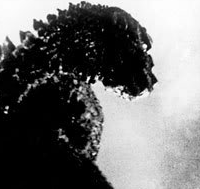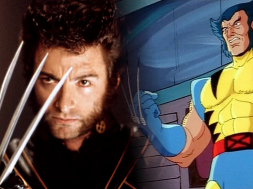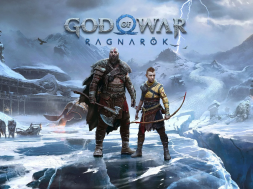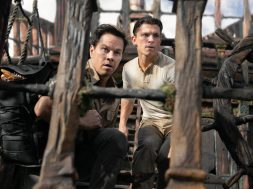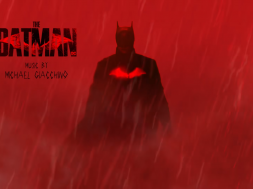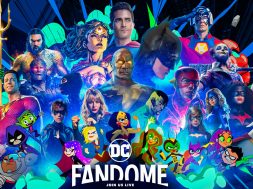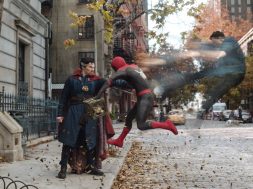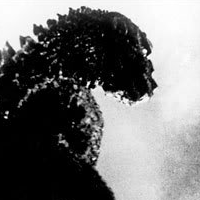
Earth-Shaking! Screen-Shattering! Such were just two of the phrases that appeared on the original theatre posters for Godzilla, King of the Monsters in 1956. While that version of the film, the re-cut, Americanized version starring Raymond Burr as a shoe-horned non-Japanese character, is wholly representative of an attitude against that of foreign cinema in mainstream media that is still perpetuated to this day (more on that later), the tag-lines were actually very appropriate. Godzilla is an Earth-Shaking, Screen-Shattering icon, or at least would become one, far more than anyone could have expected back in it’s humble beginnings. Whether it be because of the multiple cartoon series’, the plethora of gaming appearances (both tabletop and video games) or any of his dozens of films, Godzilla is a name and a likeness that almost everyone has heard of, regardless of how much or how little they’ve seen of it.
The behemoth has defined big monster films since their inception, and has provided the standard by which any unstoppable, otherworldly invader-centric film is compared to for, well, almost as long as those films have existed, really. On May 16th of this year, Godzilla’s latest cinematic outing is going to come crashing onto our screens and I cannot wait.
This film looks like it might FINALLY be the serious big-budget blockbuster that the legend has so sorely deserved since it’s original outings and give real credence to the title King of the Monsters to western audiences, some 60 years after the fact.
In order to tide my excitement over until the new film is out, I’ve decided to do a little series/review for all of you on the collected history of Godzilla’s sordid history; from the great to the bad to the downright laughable. Let’s get started, shall we?
Released in Japan in 1954, Toho’s Godzilla, or Gojira in Japan, is one of the very first Kaiju films, and arguably the most famous (King Kong being the other candidate). Kaiju, which literally translates to ‘strange creature’, films are essentially monster films where the monster is seen to either attack a major city or fight other monsters. The films are often very ridiculous in nature, almost to the point of satire, with at times multiple different monsters on screen battling it out against or with each other. They are popular very much worldwide, with recent Guillermo Del Toro directed CGI-fest Pacific Rim being just the latest Hollywood addition to the pile.
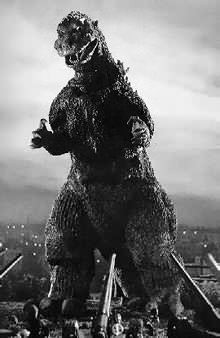
I say CGI-fest because characteristically one of the things that very much sets Japanese Kaiju films apart from the western interpretation is the necessity towards the use of ‘real’ set-design and special effects. Ever since the 50’s with the original Godzilla, all the monsters in Kaiju films have been guys in suits, with the cities being hand-made models that get progressively torn apart in the film. It’s probably kind of hard to imagine because, well, big-budget films these days just don’t have that any more, but it really adds an element of both atmosphere and hilarity when you realize you’re watching potentially multiple guys in very elaborate suits try to kick the snot out of each other as giant monsters. I mean, imagine if Undertaker and Kane at Wrestlemania 14 had been wearing giant lizard suits while they wrestled – it’d still be immensely entertaining, but also completely ridiculous.
The original Godzilla tells the story of survival against all odds as our small band of humans struggle to find a way to defeat the oncoming terror and the doom that follows in the of it’s destruction. In most invasion/monster films, there are two acts – survival of the threat and then overcoming of the threat. Godzilla differs from this in that the film never really leaves that first act of being entirely about surviving the monster, surviving the horror and seeing another day. It’s this core difference that makes the film so powerful to watch not just as a great landmark of movie history but also as cultural representation of a troubled time in Japanese and world history.
Godzilla was a very obvious artistic response to the nuclear bombings of Hiroshima and Nagasaki and the fallout that followed; the sense of unease about the powers that the world’s superpowers were harness and the fear that at any moment everything you know could be wiped out in an instant. These feelings are very distinctly communicated not only in the plot of the film with how the army’s weapons are useless against the threat and how Godzilla is seen as this apathetic monstrosity who cares not for the plight of it’s victims but also in how the film ends when the professor chooses to die with his oxygen-stealing technology that defeats the beast instead of allowing the knowledge to exist any longer. Godzilla is immensely engrossing as both a well-paced film and a lament of something that is truly tragic and difficult to ever accurately communicate.
I mentioned earlier about an American re-cut of this first film exists, and it was the first taste of Godzilla anyone had outside of Japan. Godzilla, King of the Monsters is the first film but with Raymond Burr cut into it at various points as an American journalist who gets the last word in and acts as the narrator. Now, I could go on a rant here about how this bastardization still occurs today in mainstream cinema but I’ll spare you and just say that it’s actually not that bad – the film still works, it’s just really pointless.
It is understandable though because at the time Hollywood was in a boom and foreign films weren’t quite the multi-culturally huge market they are today and a wholly Japanese film probably wouldn’t have caught audiences the way Raymond Burr’s name on the poster did. No, the more glaring example of Hollywood pointlessly changing things is in Godzilla’s direct sequel, the 1955 Godzilla Raids Again which was released in America as Gigantis, The Fire Monster in 1959. They deliberately attempted to sell the film as having a different monster to Godzilla and the film then flopped and the decision was made to keep them uniform as Godzilla films from then on. You’ll have to wait for next week for more on that story though!
I find it somewhat difficult to overstate the influence I feel the original Godzilla has had on mainstream cinema as a whole. However, at the risk of sounding over-zealous I’ll reign myself in a little bit. Godzilla not only provided the blueprint for almost every big-budget film to come out of Hollywood for the last 60 years, but also managed to meld difference influences that hadn’t been seen before. Films like the early Bela Lugosi Draculas and James Whales’ Frankenstein merged with literary classics like 20,000 Leagues Under the Sea and Moby Dick to create the stomping, apathetic monstrosity that is Godzilla.
Even now there’s very few American films that capture the same level of horror and action that this film contains without being heavy on one over the other. Off hand, Ridley Scott’s Alien is one of the first that I can think of that have that real sense of dread stemming from something that is at least somewhat natural and in some way man-made. Even then, Alien is a film about isolation rather than widespread chaos and destruction, something Godzilla has in spades.
A truly great film, and only the beginning for the King of the Monsters.
